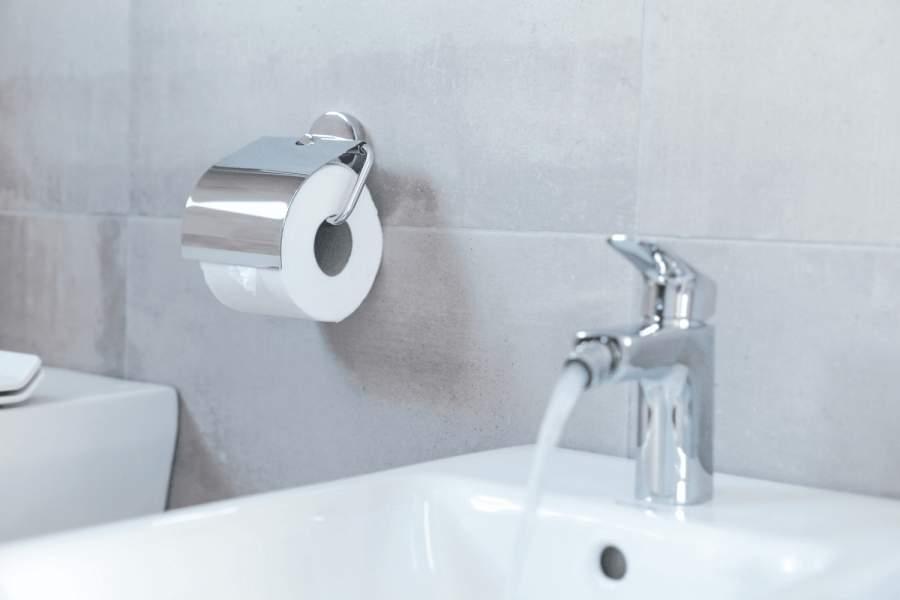Bidets are still a fairly mysterious bathroom item. If you’re wondering how clean a bidet really is – this is the article for you.
In this article, I cover:
- Is bidet water clean? (yes! It’s the same water your shower uses)
- How to clean your bidet to keep it fresh and sanitary
- Exactly how different bidets stay clean (think UV sterilization, silver nanoparticles, eWater+)
Ready? Let’s jump right in.
Is bidet water clean?
Yes, bidet water is totally clean and sanitary. It’s supplied from the same water source that supplies your taps, shower, and bath. The water is always fresh and never gets recycled. The bidets water is never drawn from your toilet tank or bowl.
Bidets also include a small water filter to stop any small particles from entering the bidet. This protects both you and the bidet. You can also opt to install an external water filter to provide an extra layer of protection.
External water filters remove small particles, prevent hard water build-up and some can even sterilize the water.
Where does a bidet get its water from?
Bidet’s draw water directly from your home’s water supply. It’s the same water you shower in and wash your hands in. The bidet does not take water from the toilet bowl or toilet tank. It’s clean, sanitary, and safe to use on your sensitive regions.
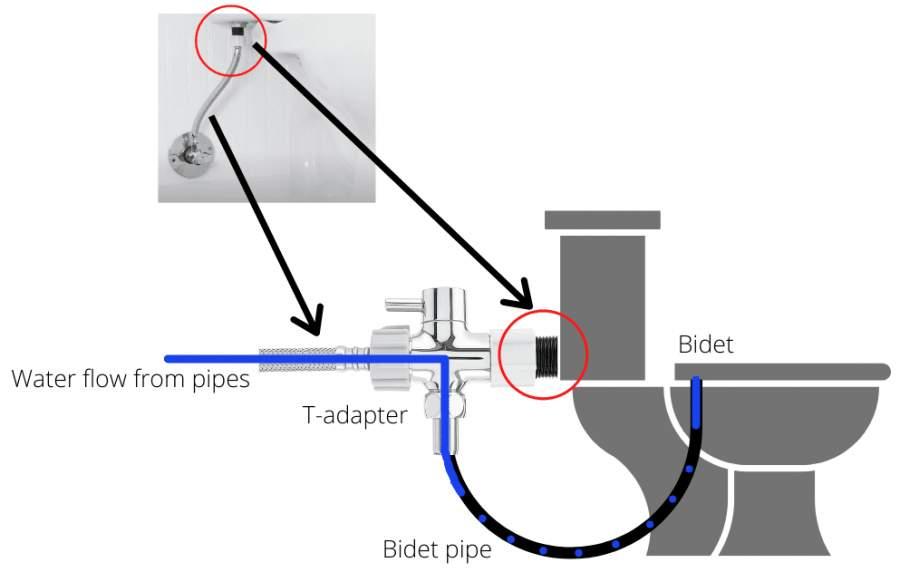
When you install your bidet, you’ll have to install a t-adapter on the joint that supplies your toilet with water. This t-adapter draws water straight from your pipes and transports it to the bidet, bypassing the toilet. The water never goes into the toilet.
Some electric bidets hold 20-60 seconds worth of water in a small tank in the bidet. The tank heats the water constantly, so there’s always warm water available to the user.
This tank is completely clean so the water doesn’t become dirty while sitting there.
How does a bidet stay clean?
Most bidets these days come with a variety of different measures to ensure they stay clean and free of germs.
These include: self cleaning wands, nozzle sterilization, antimicrobial materials and a toto exclusive, premist.
Self cleaning wands
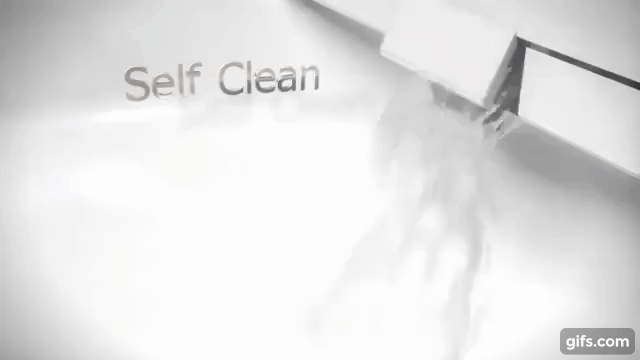
The vast majority of bidets offer self cleaning wands.
A basic self-cleaning wand will rinse itself with water before and after each wash. This will clean any dust off the wand and ensure the water stream is clean.
Most spray wands simply rinse the outside of the wand, but you can get ones that clean both inside and outside the wand (like the Bio Bidet BB-2000).
All self-cleaning spray wands will automatically clean themselves during a wash cycle, but it’s becoming more and more common to have an ‘on-demand’ cleaning mode as well. This means you can clean the wand whenever you feel like it without having to run a wash cycle.
When the spray wands aren’t in use, they retract into the bidet or sit behind a guard gate. This ensures that no debris can accidentally hit them.
Nozzle sterilization
Self-cleaning wands reduce how often you need to clean the spray wands. That said, if they’re just using plain water you’ll still need to disinfect the wands from time to time.
Some high-end bidets go a step further than plain water and use wand sterilization to keep the wands squeaky clean.
Different bidets have different sterilization methods but all are similarly effective. These methods include UV sanitization, silver nanoparticles, and eWater+.
UV sanitization
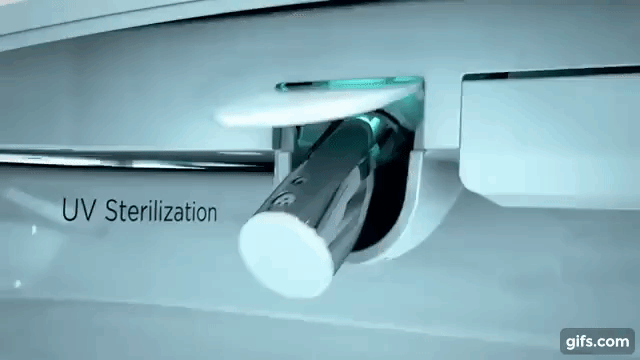
UV light is a good disinfectant because it can kill bacteria and germs. As the wand retracts into the bidet, a UV light shines on it to clean it.
Bidets that use this method include the Kohler C3 models and the Discovery DLS from Bio Bidet.
Silver nanoparticles
Silver nanoparticles are a proven disinfectant. The wands are treated with silver nanoparticles, and this keeps them free of any bacteria or fungi. The nanoparticles also help to prevent corrosion of steel wands.
Bidets that use this method include the Brondell Swash 1400, and the Kohler Bn330-N0 Novita.
eWater+
eWater stands for electrolyzed water. As the water passes through the bidet it’s turned into a charged solution.
The solution is mild and natural cleaner. In fact, it’s so natural that it’s safe to drink!
Despite having no harsh chemical ingredients, eWater+ is a proven disinfectant, sanitizing the spray wands and preventing any build-up of dirt and germs.
Here’s a video showing how well it cleans compared to normal water:
eWater isn’t just used in the bidet world, it’s also regularly used in the food industry.
This method is exclusive to Toto Washlets. The C2, C5, S550e, S500e, S300e, S350e and the (new) K300 all come with eWater+.
Germ resistant plastic / antibacterial materials
Some bidets are made with antimicrobial materials which mean germs and bacteria can’t fester on the bidet or its spray wands.
To make something antimicrobial, the material is integrated with an active ingredient which prevents any microbial growth.
An example in the bidet world is the Alpha JX, whose body is made with anti-bacterial polypropylene resin. Its spray wand is treated internally with a silver nano-particle compound for extra sterility.
Premist (Toto exclusive)
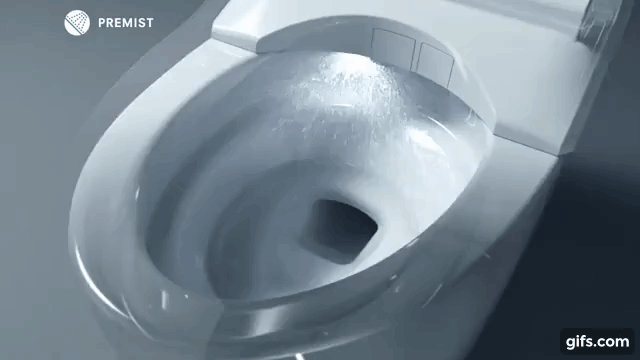
Toto Washlets are the leading bidets when it comes to keeping clean. And the star feature is the premist.
As you sit down on the toilet, the bowl is misted with water (or eWater+ if the bidet offers it). This light misting means that any dirt doesn’t stick very well to the bowl, so it’s easily flushed away at the end of your trip.
Basically, no more skid marks on the toilet bowl.
The toto models that offer premist are: C100, C200, K300 (both versions), C5, C5, S500e, S550e, S300e, S350e.
Side note: If you have one of Toto’s integrated toilet and washlet sets, they use a UV light to sanitize the whole bowl, not just the spray wands. The UV light activates a photocatalyst on the surface of the bowl and they work together to break down visible and invisible waste. The toilet basically cleans itself!
How do you clean a bidet?
Bidets clean you, but every so often we need to return the favour and clean them!
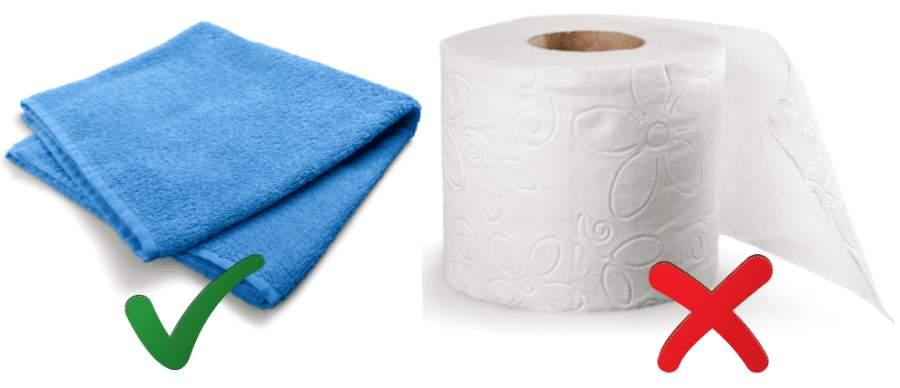
There are a few basic rules you should follow when you’re cleaning a bidet:
- If you have an electric bidet, unplug it before you clean the body of the bidet.
- Stay away from harsh chemical cleaners, only use warm water of mild detergents like dish soap or seventh generation products. Vinegar is also a good option.
- Use a soft cloth not toilet paper or a rough scrubber.
Harsh cleaners or chlorine-based products can damage the surface of your bidet causing discoloration or cracking. Bidet manufactures are aware of the risk these cleaners pose and don’t cover any resultant damage under their warranties (it’s very easy to spot too, so will be hard to blame on something else!).
As well as chlorine you want to avoid anything with thinner, benzene, hydrochloric acid and other acidic chemicals.
Scrubbing too hard with a rough material can lead to scratches.
How to clean the body of the bidet
To quickly clean the body of your bidet you can give it a quick once over with a damp cloth. If you want to use a cleaner, stick to a gentle one such as dish soap, Simple Green or Windex.
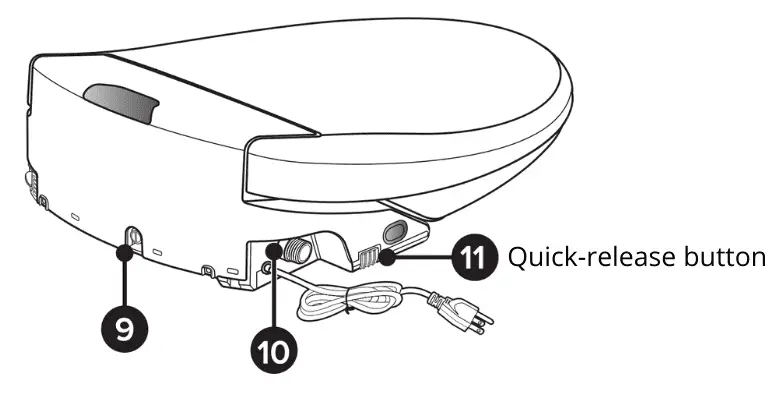
Every few months you’ll want to remove the whole seat so you can clean underneath it. Most seats will have a ‘quick release’ button on the side that lets you easily lift the whole thing off.
Once you have it off, you can clean your toilet as you normally would and then give the bidet a thorough wipe with a damp cloth and some mild cleanser. Before you finish, give the bidet a once over with a cloth that’s only been soaked in water. This will get rid of any traces of cleaner left on the bidet.
Dry the toilet and the bidet off before you put the bidet back on, then plug your bidet in and run a wash cycle to make sure it’s working fine.
How to remove stains from a bidet
If your bathroom is anything like mine, it’s filled with products for various parts of my body. You need to be really careful using any products near the bidet because a small unnoticed spill can lead to a permanent stain.
Keep all your hair and air freshener sprays, lotions, body wash, skin tanners, body butters, and oils away from the bidet.
If something does get on your bidet, wipe it away as soon as possible with a damp soft cloth. If it’s too late and there’s a stain, a 1:1 mix of rubbing alcohol and water and a soft cloth should do the trick.
How to clean bidet spray nozzles
If your bidet comes with an on-demand self cleaning mode, run this once a day to give the spray wands a rinse. This will keep most of the dust and general dirt off the wands.
Self-cleaning wands reduce the amount of cleaning you need to do, but it’s still a good idea to manually clean the wands every so often.
To manually clean the spray wands:
- Extend the nozzles in manual cleaning mode. Your bidet user manual should have instructions for exactly how to do this.
- Wipe the nozzles with a soft cloth that you’ve soaked in a diluted solution of a mild cleaner.
- Wipe the nozzles down with a new cloth that’s just been soaked in water. This will get rid of any traces of the cleaner.
- Run a wash cycle to check everything is working okay.
I suggest manually cleaning the nozzles once a month, but you can get away with less than this if you have self-sterilizing nozzles.
If you want, you can add a splash of vinegar to your cleaning solution for extra sterilizing power.
If your bidet has removable nozzles you can take these off and leave them soaking in the cleaning solution while you clean the rest of the bidet.
How to unclog bidet spray nozzles
A low water pressure or a spray that’s going in the wrong direction are both signs of clogged nozzles.
Over time, small particles and mineral deposits can build up inside your bidet and clog the nozzles. Luckily, fixing this is relatively easy.
- Extend the spray wands in manual cleaning mode so no water is spraying out.
- Loosen any visible dirt with a toothpick.
- Remove the spray nozzles if possible (exact instructions for how to do this will be in your bidet manual, but it should just be a case of twisting and gently pulling until the nozzle tips come off). **If this isn’t possible see note below.
- Soak the nozzles in vinegar for 2-4 hours.
- Rinse the nozzles with water and scrub them with an old toothbrush until they look clean.
- Put the nozzles back on the bidet.
- Run a wash cycle to check the bidet is working fine again.
**if you can’t remove the nozzle tips from your spray wand then you can fill a small plastic bag with vinegar and tie this to your nozzles with a rubber band.
Vinegar is a wonder ingredient here because it will loosen hard deposits that have built up and make it easy for you to scrub them away with the toothbrush.
I suggest doing this every 6 months or so if you know you have a hard water supply. This will make sure you never get to the point where the nozzles are totally clogged.
Other recommended maintenance
On top of the regular cleaning, there are some other more specific bits of maintenance you should be aware of if you want to keep your bidet in tip-top condition.
Cleaning the strainer
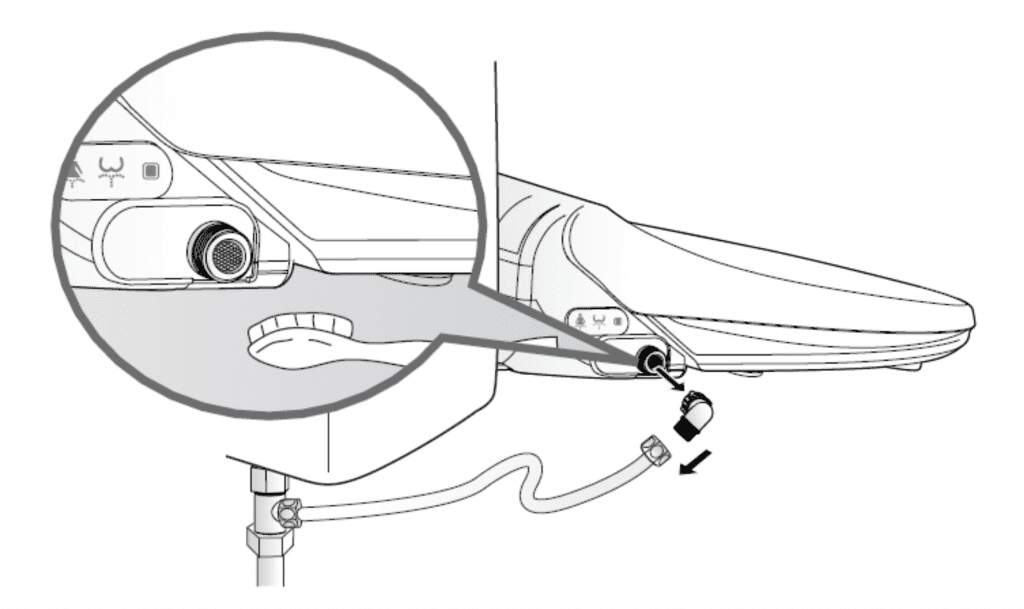
All electric bidets come with an in-built strainer to protect the insides of the bidet from any foreign matter.
Over time the strainer can become clogged so most manufacturers recommend you clean it every 6 months. On most bidets the filter is located on the side of the bidet where it connects to the hose.
To clean the external filter:
- Turn the water supply off and flush the toilet to empty the tank.
- Unplug the bidet.
- Locate the mesh filter (look in your bidets instruction manual).
- Remove the mesh filter by following the instructions in your bidet manual.
- Clean the mesh filter with a toothbrush and some water.
- Clean the hole where the mesh filter is located with a toothbrush and some water.
- Replace the mesh filter and turn the bidet back on.
If you have a non-electric bidet there might not be a strainer, but you can always remove the bidet hose and clean the inside of that to get rid of any lingering dirt. Don’t forget to turn the water off before you do this!
Clean/replace the deodorizer
Some bidets have a deodorizer that needs cleaning to keep it working effectively. The exact process for cleaning the deodorizer differs quite a lot between brands so the best advice I can give here is to check your manual.
Some seats, like the Brondell Swash 1400, require you to replace the deodorizer every 6 months.
Other seats, like the Bio Bidet BB-2000, have a deodorizer that doesn’t require any maintenance.
And some seats, like the Toto C200, need you to clean the deodorizer monthly and replace the cartridge when needed (normally after a few years).
Replace external filters
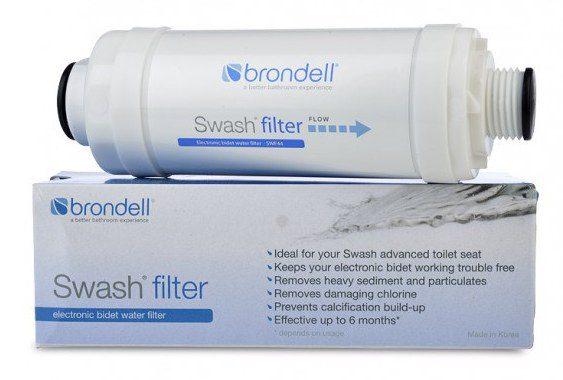
If you’re using an external filter you’ll need to replace it every six months.
If you use your bidet a lot you might find you need to replace it sooner than that. A good sign you need to replace your external filter is low water pressure.
